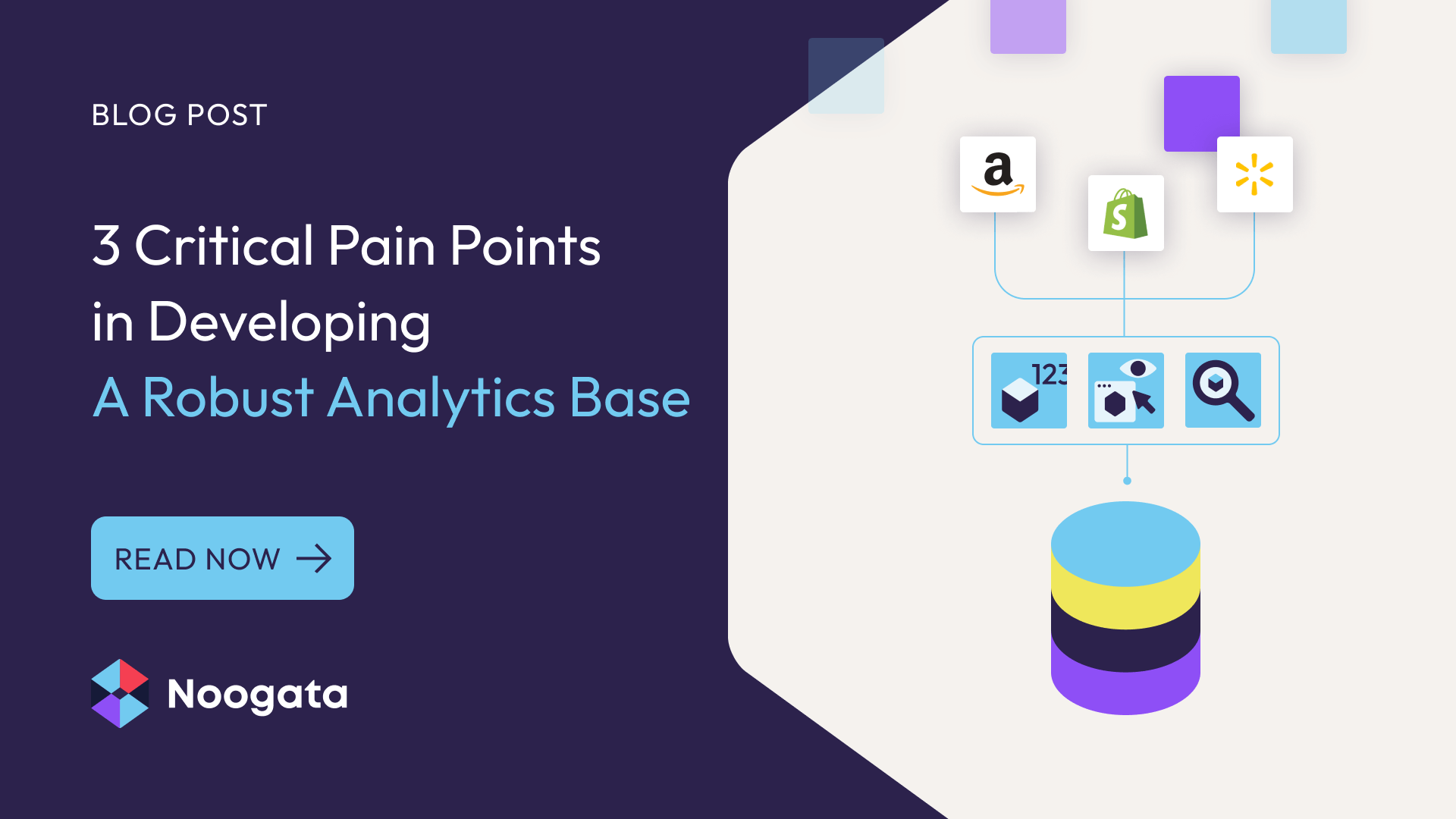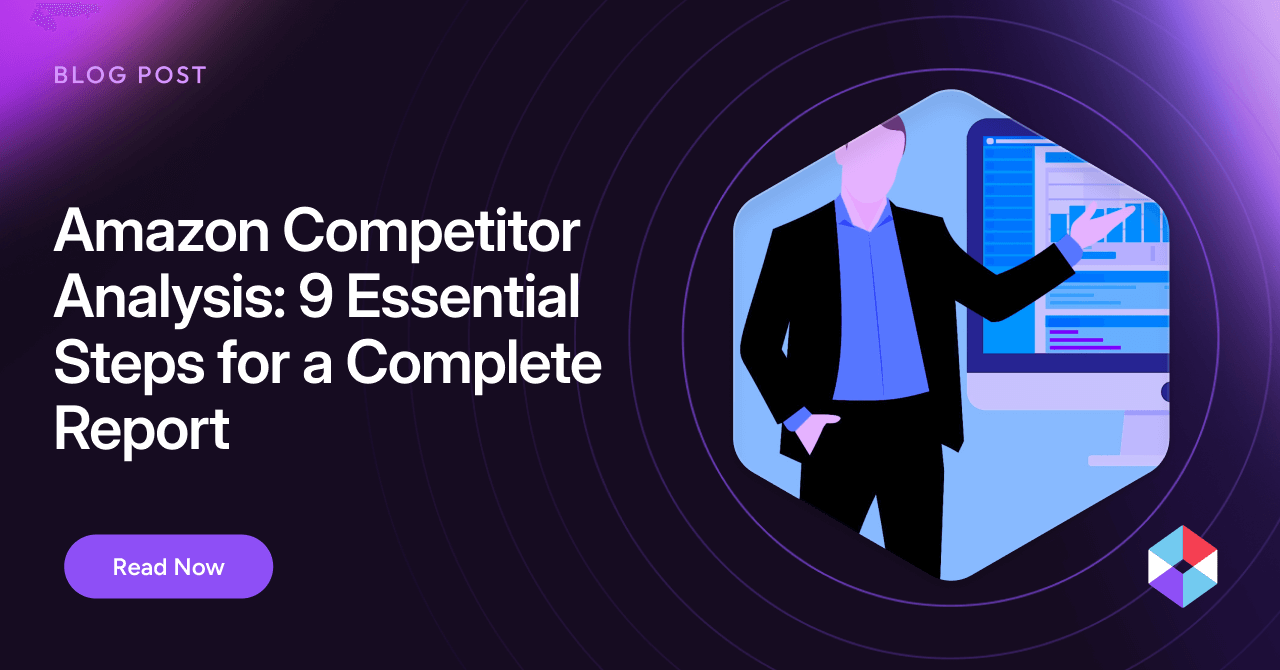The eCommerce industry is competitive and fast-moving. To thrive in such an environment and maximize the potential of online sales, consumer packaged goods companies (CPGs) need an agile data stack that provides actionable business insights based on aggregated multi-marketplace data in a timely, comprehensive, and consistent manner. This article delves into 3 critical challenges that CPGs face without an agile data stack implemented.
eCommerce is wrought with complex data collection challenges since online customer interactions generate more data than in-store sales. Successful consumer goods companies aiming to drive strategic decisions, and manage daily tactical operations (gauging customer demand, improving product visibility and search traffic, and targeting effective advertising spend) are often at a loss as to how to wrangle all their eCommerce data. In order to make sense of this data, companies need agile data analytics capabilities that can provide actionable insights based on aggregated multi-marketplace data in a consistent and comprehensive manner. Without this robust analytics base, CPGs may find themselves losing market share to their competitors.
How CPGs Can Overcome the The Intrinsic Challenges of eCommerce Data Collection
eCommerce involves selling multiple products across a variety of platforms, whether they be global marketplaces (like Amazon and Walmart), D2C platforms (like Shopify), advertising platforms (like Google and Facebook), or CRM platforms (like Nielsen). As such, one of the first challenges faced by CPGs is how to aggregate and analyze data that is heterogeneous as a result of being housed across multiple marketplaces and platforms.
Simply loading and transforming operational data into a data warehouse is a necessary first step. But when trying to clean, prepare, and make sense of this data, organizations find that data aggregation is only the tip of the iceberg. The following three processes are crucial to ensure business teams are supported by insights that truly benefit their decision making.
- Harmonize eCommerce Data and Analytics
When managing eCommerce data and analytics on an enterprise basis, it is important that business analysts can make apples to apples comparisons across different platforms. Doing so requires a few core capabilities:
First, any cross-platform analysis will require product information to be harmonized. That means product IDs will need to be mapped, given that the same product will be ascribed different identification codes on each platform (Amazon, Walmart and Shopify). Creating and maintaining a mapping table to harmonize data for products sold across multiple platforms is therefore a crucial requirement for CPGs.
- Enrich eCommerce Data and Analytics (Completing the Picture)
CPGs do not have direct control over the granularity and comprehensiveness of data offered by eCommerce platforms. For example, while Amazon ranks the popularity of different search terms across its site, it does not provide the total volume of searches, including searches across other domains. In such cases, CPGs need to augment their primary sources with external data sources.
There are many opportunities to automate the capture of complementary data from third parties or other public sources. For example, company information and product titles can be obtained from company websites. Customer review sites and blogs provide rich insights into consumer sentiment. And search term trends from providers such as Google can help guide advertising spend.
- Use AI Models to Gain Actionable Insights
Once data has been aggregated, harmonized and enriched, business analysts have the task of turning all of that information into actionable insights. Artificial intelligence greatly assists in that process, helping to scale data analysis, uncover novel insights, and drive more effective business decisions.AI models can be used effectively to support a wide range of functions. Examples include:
Defining a “digital shelf” by Identifying and grouping all relevant product search terms. Consumer searches can vary by nature for the same product. Equally, certain search terms can be ambiguous and used to search for different products. AI allows you to cluster these similar searches and in turn, accurately gauge demand trends.
Optimizing product titles and descriptions to drive more organic search traffic. One of the most cost effective ways to boost eCommerce sales is to increase organic search traffic. AI not only enables CPGs to better understand all of the terms used by consumers to search for a given product, but can also help craft optimal product descriptions to boost product visibility.
Conducting competitor analysis to monitor threats and opportunities. Competitive intelligence is crucial to successful eCommerce. Using AI, changes in competitive pricing, promotions, and advertising strategies can be ascertained to track key market developments.In addition to using AI models to derive new insights, the ability to view datasets via dashboards can also help business users to identify key trends, potential opportunities and emerging threats.
A Complex Challenge
The three processes highlighted in this article – harmonizing data, enriching it, and using AI models to derive actionable insights – are critical factors to consider when building out an eCommerce analytics technology stack. But they also represent technical challenges that cannot be underestimated.
Building out a proprietary data stack using in-house resources is inevitably going to generate obstacles. Finding and retaining staff with the right skill sets, particularly in the field of AI, is a significant hurdle. Equally, given that the landscape continuously evolves – as eCommerce marketplaces and platforms update their data models, APIs and other relevant services – in-house data stacks will require significant resources to maintain, which needs to be taken into account when deliberating whether to buy versus build.
Irrespective of how organizations go about building out their eCommerce data and analytics stack, they will need to stay focused on a clear goal: ensuring clean, fresh data is easily accessible by all relevant stakeholders, and that those stakeholders are armed with AI-driven models to scale data analysis and derive actionable insights that drive business profitability.
The Noogata Advantage
Noogata ensures that the challenges highlighted in this article can be easily solved. Our platform aggregates, harmonizes and enriches data with accessible, and transparent AI-driven models. Get in contact to see a demo of those capabilities and see for yourself how Noogata can help your business!



